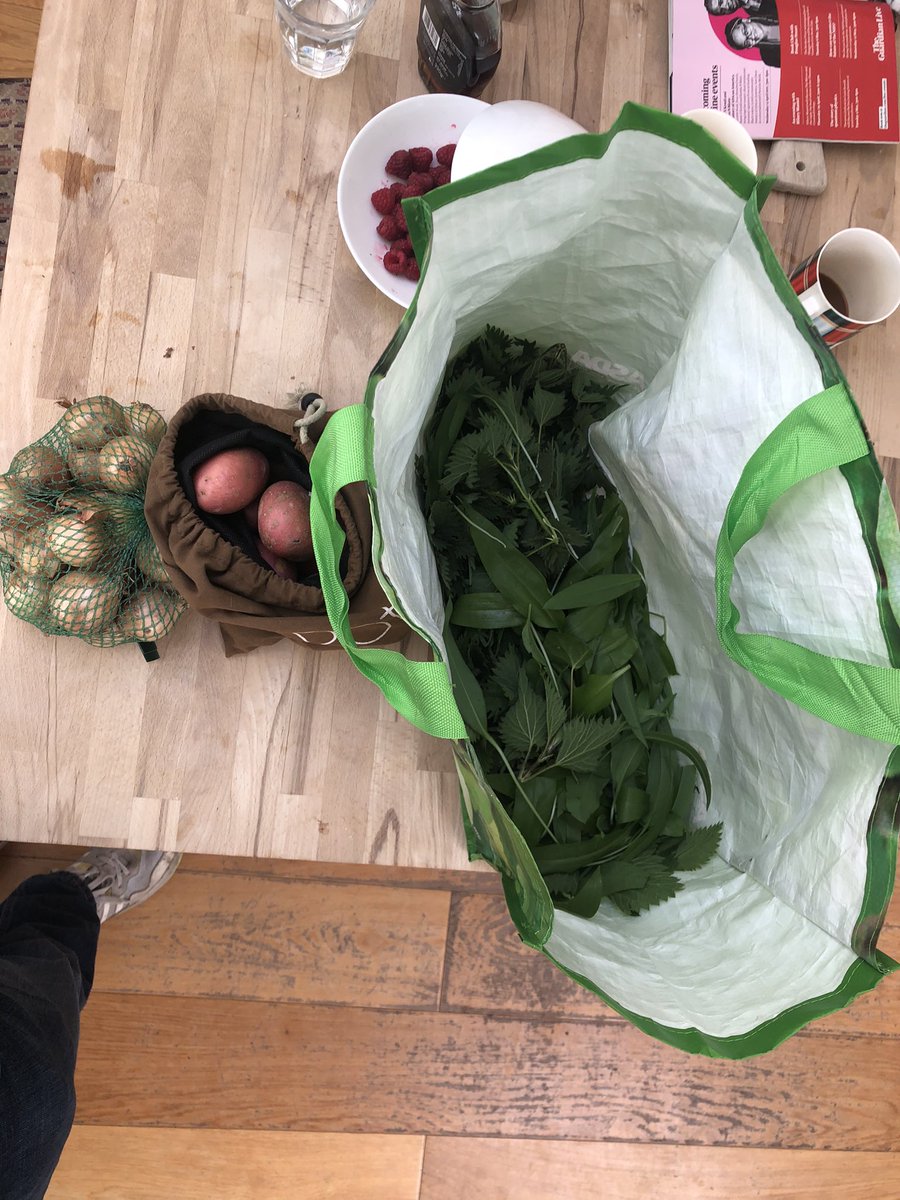Last weekend I did make North London nettle and wild garlic soup and took pictures ... start with a robust bag and robust rubber gloves 

You can only pick Nettles for eating in the spring. Pick the tops (fearsomely growing). Nettles are found in sunny places. Wild garlic you need to look for more shady woodland 



You should aim for at least half a big bags worth and the other ingredients are onions, potatoes, white wine and chicken stock 



On return home chop onions roughly and put into a big wide stew pot (think big) with oil. Fry gently until caramelised whilst you wash the leaves 



If you have hungry teenager at this point also get American style blueberry pancake mixture from @barleybirney from fridge and put on some emergency blueberry pancakes 

Now wash thoroughly nettles and garlic using scissors to roughly cut them. Reserve some best looking top buds for garnish. Discard the inevitable wrong leaf by rooting through with the rubber gloves on. Serve emergency pancakes 



Once potatoe slices also coloured add nettles and garlic. Will be massive at the start but will wilt quickly 



Pepper and salt to taste. High pepper is fine. Low simmer for at least 30 mins
Now blend. Opinions vary on how smooth - the Birney family doesn’t like it too blended. Simmer at least another 30 mins. 



Sadly and stupidly I don’t have the finished product but eat with bread and perhaps yogurt. The nettles will have a slightly warm mouth/throat feel but won’t be stingy. Amazingly my kids enjoy this soup!
• • •
Missing some Tweet in this thread? You can try to
force a refresh







